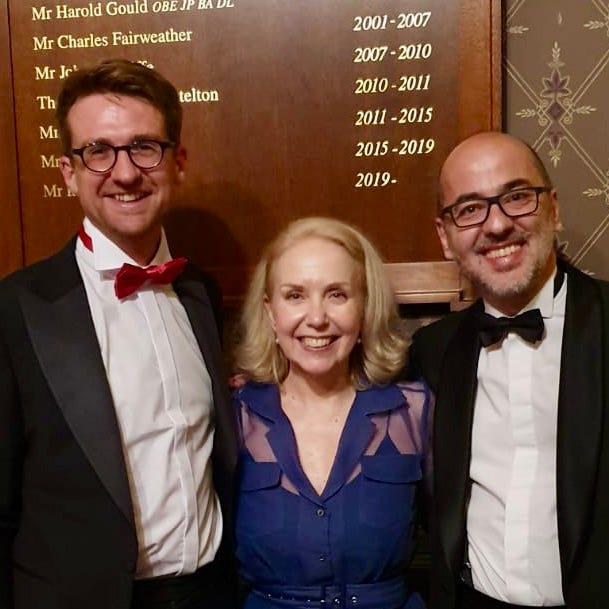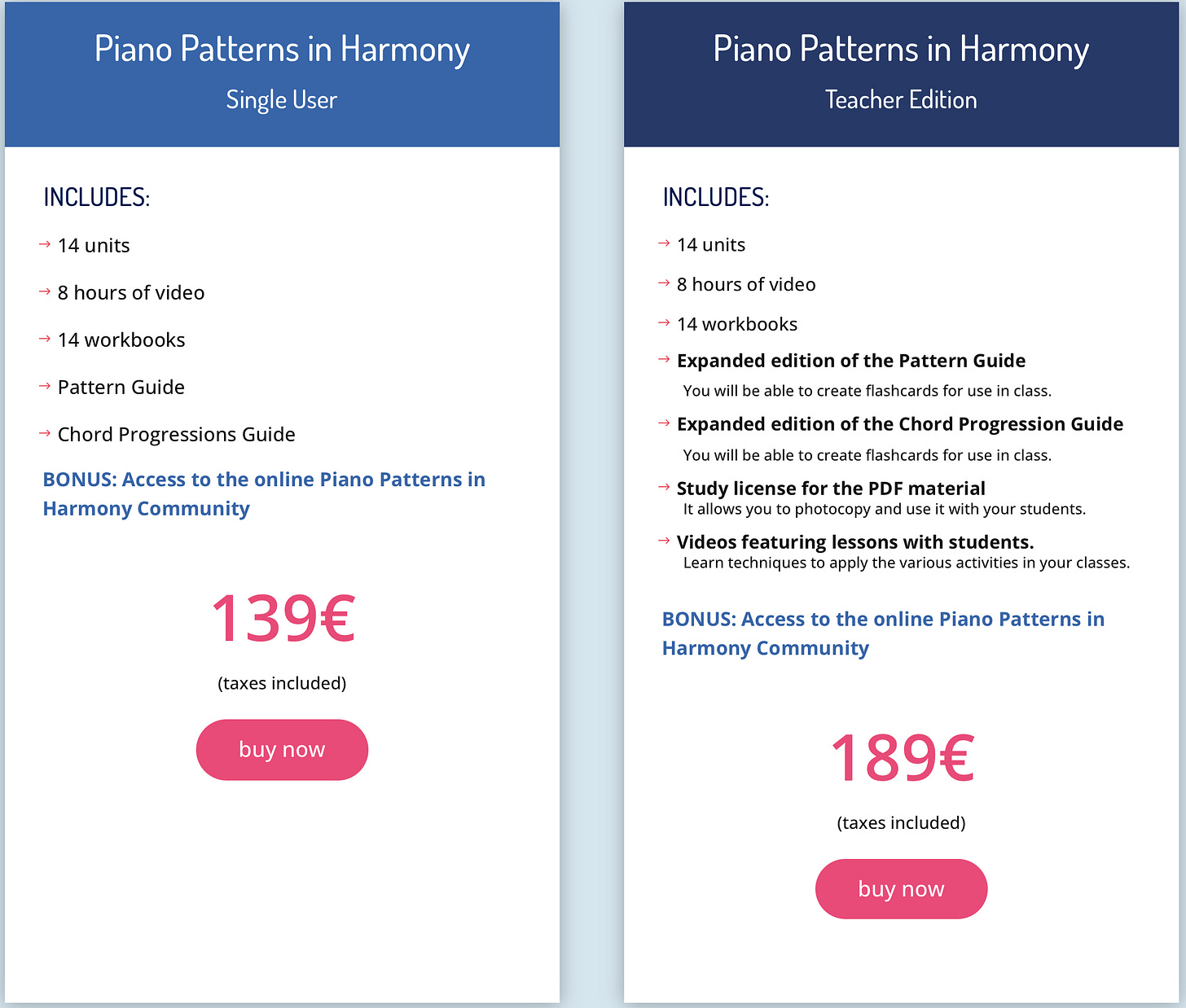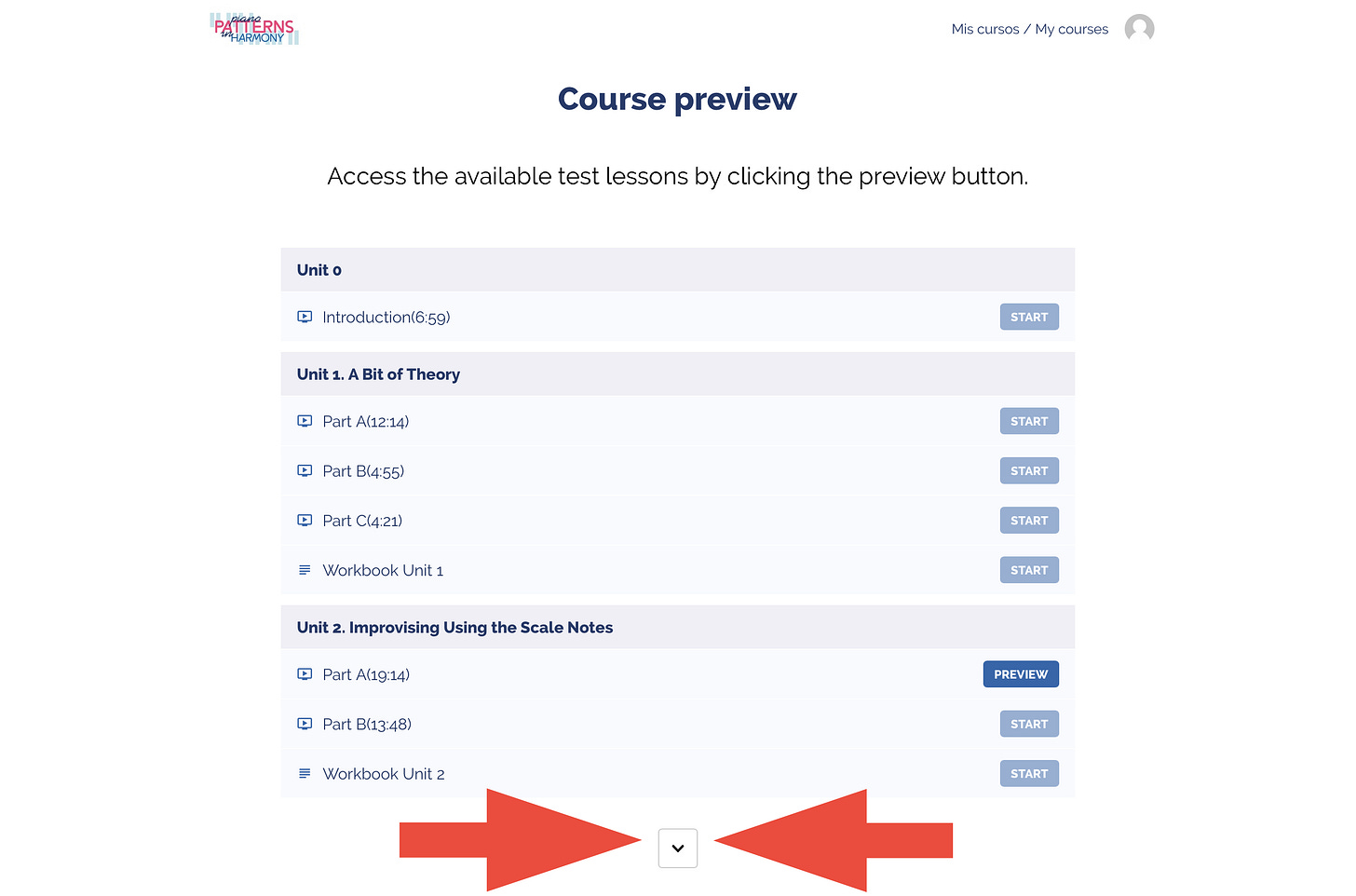Course Review: Piano Patterns in Harmony
A wonderful guide to getting creative with classical music
NOTE: I wrote this review before Piano Patterns in Harmony won the Best Digital Content at the Art of Piano Education Awards. Bravo to Juan! Here’s a photo of us celebrating at the Royal Albert Hall with the founder of the awards, Elena Cobb.
Now, here’s the original review:
Every now and then someone creates something really brilliant that doesn’t immediately get the recognition it deserves. It’s hard to break through in this oversaturated, algorithmic world, especially when you’re working alone and competing against corporations with big budgets and hucksters who promise you can learn the piano in 10 minutes.
Juan Cabeza’s online course Piano Patterns in Harmony is a wonderful resource. It has not yet got the attention it deserves.
I hope that this is only a matter of time. This an extremely high quality course built on a really solid pedagogical foundation. It offers teachers a really rich and engaging method that’s well-designed yet flexible and easy to use.
Juan is a Spanish piano teacher with over 20 years of experience. His work has been heavily informed by Prof. Dr Edwin E. Gordon’s Music Learning Theory (MLT), which outlines how we learn music and explains how to teach it in a more intuitive way. Indeed, Juan is the author of Diversions published by Alfred, a set of Etudes which lends itself to an application of MLT.
I’ve only recently started dipping my toes into MLT. I find it fascinating but it’s a big topic and there’s quite a lot of jargon, which is something I reflexively find a bit off-putting. Despite struggling with the vocabulary, I’m impressed by what I’ve read. I’ve seen in my own studio and in workshops how implementing it leads to impressive results.
Although the principles of MLT have clearly informed the design of the course, but you really do not need to have an understanding of MLT to take the course. Indeed, I think this is a great example of a course that any piano teacher would benefit from, regardless of their prior training.
Sound principles
The core concept of the course is that the best way to learn creativity is to take pre-existing musical models and learn how to change them. This concept is deceptively simple: it sounds really obvious when you say it, but most piano teachers simply don’t do it. We’ve spent years being trained to recreate what’s on the score, not to change it. Changing it is all too frequently viewed as “wrong”. (Forrest Kinney explores the historical reasons for this counterproductive attitude in detail in his book Music-Creativity-Joy: Exploring the Four Arts of Music, which I reviewed at the end of 2024).
Indeed, this is the pedagogical principle that shapes my Creative Introductions series.
But my Creative Introductions are designed for ad hoc use, whereas in Piano Patterns in Harmony Juan has created a well-structured and detailed curriculum for developing creativity. It helps a student proceed from experimenting with the most basic 4-chord progression to a fairly comprehensive knowledge of how to improvise beautiful music in a variety of styles using all the primary and secondary chords of major and minor keys.
Learning from the best
As models, Juan focuses primarily on classical repertoire. Familiar works by J. S. Bach, Wolfgang Amadeus Mozart, Ludwig van Beethoven, Muzio Clementi, Anton Diabelli, Franz Schubert, Guiseppe Concone, Frédéric Chopin, and J. F. F. Bürgmuller are taken apart and reassembled in different ways — just like how engineers used to teach themselves to repair machines by dismantling and reassembling them. More modern composers are included, including Yann Tiersen and Philip Glass, but the focus is primarily classical.
A student might for example find themselves playing the pattern used at the opening of Beethoven’s Moonlight Sonata in a major key, in a different inversion, in 3/4 time, over a different chord sequence (maybe including modulation) and then adding various melodic embellishments.
NB this video isn’t from the course, but it gives you a good idea of how the method works and what the result is.
The method has multiple advantages:
It teaches us music theory in a practical way, which makes it more memorable and more interesting than learning it through a book
It helps us to understand the creative decisions these excellent composers made, which increases our appreciation of their work
It shows us how to get started with creative playing without being didactic about how it “must” be done
It’s done at the piano, not by writing on manuscript paper, which is much better for a student’s musicianship
The fundamental principle of the learning method is this that a student is presented with a bar-long pattern to play, shown how to vary it by playing it in different chord inversions or by adding non-chord tones, appoggiaturas, etc., and then shown how to apply it to a series of increasingly complex chord sequences.
The 14 units are as follows:
“A bit of theory” (covering the concepts required to understand the course, including chords, inversions, chord symbols, Roman numeral analysis, and melodic concepts like passing notes, neighbour notes and appoggiaturas)
“Improvising using the scale notes” (over root position chords in C major)
“Triads and chord positions”
“Connecting chords” (voice-leading)
“I - V chord progressions”
“Neighbour notes”
“I - IV - V chord progressions and appoggiaturas”
I - II - V - I chord progressions”
“The cadential 6/4”
“New Melodic Ideas”
“III, VI, and VII degrees”
“The Pachelbel’s Canon and the Circle of Fifths”
“Secondary Dominants and Creating Chord Progressions”
“Morovsky variations” — a review of all the concepts as applied to a chord sequence from Alexander Morovsky’s Prelude in C minor
There’s also some powerful bonus material: a collection of 100 piano patterns and a set of suggested chord progressions. These can be used in combination in lessons to test the skills of any student who has completed the course.
What kind of students would it suit?
As well as working through the course, I’ve taught the course material from units 2-5 with students aged 12 - mid-60s. I’ve been really pleased with the results and I’m particularly impressed with how it works well with students who don’t consider themselves to be creative.
Genre
This course will suit anyone who wants a comprehensive grasp of the basics of creating Western tonal music.
It’s particularly suitable for those who enjoy Classical music. It could also be useful as additional material for students who want to explore pop and, to a lesser extent, jazz.
Personality
It will work particularly well with students who respond well to having a clear, well thought through structure.
It will also be useful as a core curriculum for students who prefer to explore more freely, but you’ll need to allow space for diversions too.
Level
This is not a course for beginners. The curriculum is designed for students who are intermediate level or above. They need to be capable of playing chords and their inversions in a variety of keys. Quoting from the course page, ‘if you can play a Sonatina by Diabelli, an Invention by Bach, or “Nuvole Bianche,” for example, you will find the course appropriate for your level.’
Practicalities
The course is delivered via the Teachable platform and is presented primarily in video format, with many downloadable PDFs. The teacher works through the videos, then uses the PDFs for teaching in their studio. There’s about 7 hours of video content spread over the core 14 units.
If you were to work through these units with a student in dedicated lessons, I imagine it could easily fill six months. If you were to use the material to enrich your normal lesson plans, which I think would work well, it would likely take a couple of years.
The course is offered at two levels, of which the Teacher Edition is the obvious choice, as it allows you to duplicate all the PDF material for use with your students.
You can preview several modules from the course here.
When previewing, make sure to click on the arrow that I’ve highlighted with red arrows in the image below so you get to see sample modules from Units 6 and 10, otherwise you don’t really get a full flavour of the course.
Conclusion
I’m a really big fan of this course and plan to start using its curriculum with several intermediate and advanced students over the next few months.
I love how clear and well-planned the structure is, but I also love how much potential for flexibility it allows. That appeals to me both on a practical level (I really dislike working with excessively rigid curriculums!) and on a philosophical level.
We learn language by copying our parents, gradually developing our own identity expressed in original turns of phrase. This course is the musical equivalent: it gives the teacher a really clear framework to help our students learn to “speak” classical music.
What a wonderful gift to give our students! I’m excited and I hope I’ve enthused you about it too. If you’ve already taken the course, please leave a comment about your experience.








You have brought forth a great expo of Juan Cabeza’s lovely work with his Piano Patterns. He gives such easy to understand instructions to create your own unique music! ❤️